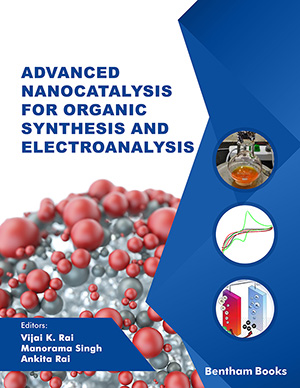
Abstract
The formation of chiral non-racemic perazamacrocyles containing three or more nitrogen atoms in the form of identical of different functionalities can be achieved by diverse methodologies which usually exploit the sequential formation of carbon-nitrogen bonds by reaction of nucleophilic nitrogen functions with electrophilic compounds. The rigidity and restricted flexibility of the reaction partners is generally a requisite for the successful cyclization, which can be alternatively accomplished by the use of a metal template. The carbon stereocenters in the formed macrocycle are generally present in the starting nitrogen-containing reagent, e.g. amine, diamine, α- aminoacid and their derivatives. Intrinsically chiral porphyrins, lacking carbon stereocenters, have been also prepared. Chiral perazamacrocycles and their metal complexes have found applications in the fields of biomedical research, diagnosis, anion sensing, molecular recognition, enantiomeric discrimination, asymmetric catalysis, and material chemistry.
Keywords: Asymmetric catalysis, cyclization, enantioselective recognition, metal complexes, perazamacrocycles, porphyrins, supramolecular chemistry
Current Organic Synthesis
Title: Chiral Perazamacrocycles: Synthesis and Applications. Part 2
Volume: 6 Issue: 2
Author(s): D. Savoia and A. Gualandi
Affiliation:
Keywords: Asymmetric catalysis, cyclization, enantioselective recognition, metal complexes, perazamacrocycles, porphyrins, supramolecular chemistry
Abstract: The formation of chiral non-racemic perazamacrocyles containing three or more nitrogen atoms in the form of identical of different functionalities can be achieved by diverse methodologies which usually exploit the sequential formation of carbon-nitrogen bonds by reaction of nucleophilic nitrogen functions with electrophilic compounds. The rigidity and restricted flexibility of the reaction partners is generally a requisite for the successful cyclization, which can be alternatively accomplished by the use of a metal template. The carbon stereocenters in the formed macrocycle are generally present in the starting nitrogen-containing reagent, e.g. amine, diamine, α- aminoacid and their derivatives. Intrinsically chiral porphyrins, lacking carbon stereocenters, have been also prepared. Chiral perazamacrocycles and their metal complexes have found applications in the fields of biomedical research, diagnosis, anion sensing, molecular recognition, enantiomeric discrimination, asymmetric catalysis, and material chemistry.
Export Options
About this article
Cite this article as:
Savoia D. and Gualandi A., Chiral Perazamacrocycles: Synthesis and Applications. Part 2, Current Organic Synthesis 2009; 6 (2) . https://dx.doi.org/10.2174/157017909788167266
| DOI https://dx.doi.org/10.2174/157017909788167266 |
Print ISSN 1570-1794 |
| Publisher Name Bentham Science Publisher |
Online ISSN 1875-6271 |
Call for Papers in Thematic Issues
Biorthogonal Chemistry: A translational Chemical Tool for In Vivo Applications
After the discovery in 1990, bioorthogonal chemistry encompassed a set of diverse, fast-paced selective chemical reactions, facilitating the study of biomolecules under physiological aura without intervening in the biochemical processes. Over the past two decades, significant progress has been witnessed in bioorthogonal reactions such as Staudinger ligation, metal-catalyzed coupling reactions, ...read more
Design and Synthesis of Green Pesticides
The development of new green pesticides is currently one of the hotspots in the field of pesticide research, aiming to develop efficient, environmentally friendly, and safe pesticide products to meet the needs of modern agricultural production. New green pesticides prioritize environmental friendliness and ecological safety. Therefore, during the research and ...read more
Exploring the Role of Chemical Graph Theory in Advancing Current Organic Synthesis
Organic synthesis is a fundamental discipline in chemistry, which is crucial for the creation of complex molecules with diverse applications in pharmaceuticals, materials science, and beyond. However, the process of designing efficient synthetic routes for target molecules remains challenging. Chemical graph theory, a branch of theoretical chemistry, offers powerful tools ...read more
Novel Green Approaches in the Synthesis of Bioactive Molecules
This special issue regards several aspects of green chemistry, focusing on innovative strategies to run organic synthesis reactions in a more environmentally friendly. Interesting articles or reviews about the critical role of green methodologies in reducing the environmental impact of chemical processes are welcome. Moreover, novel methodological studies using sustainable ...read more
Related Journals
 7
7
- Author Guidelines
- Graphical Abstracts
- Fabricating and Stating False Information
- Research Misconduct
- Post Publication Discussions and Corrections
- Publishing Ethics and Rectitude
- Increase Visibility of Your Article
- Archiving Policies
- Peer Review Workflow
- Order Your Article Before Print
- Promote Your Article
- Manuscript Transfer Facility
- Editorial Policies
- Allegations from Whistleblowers
























